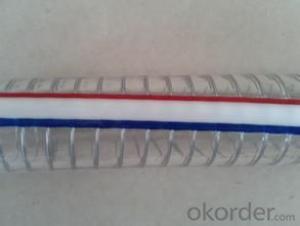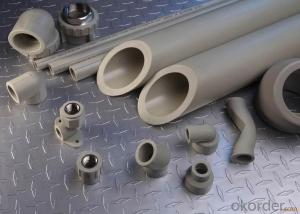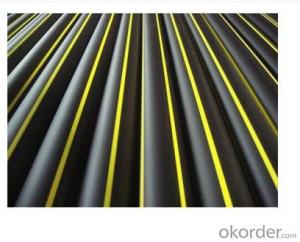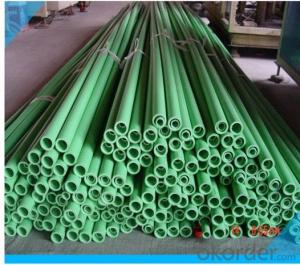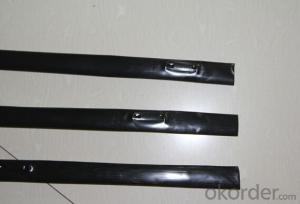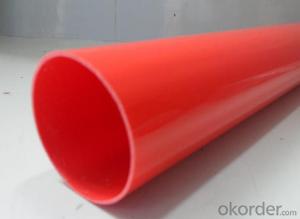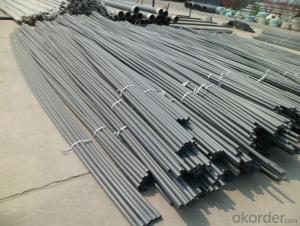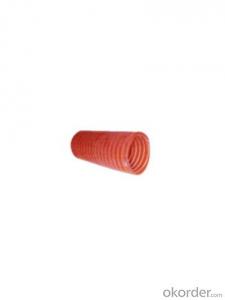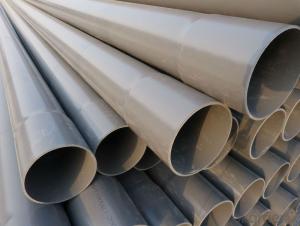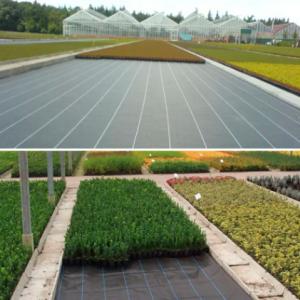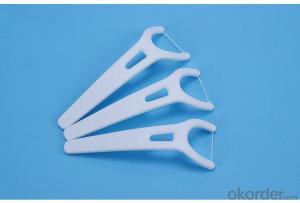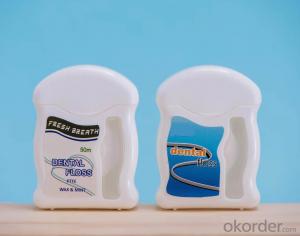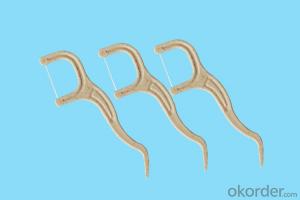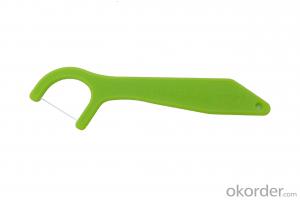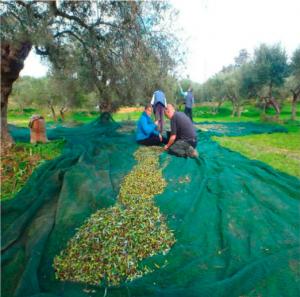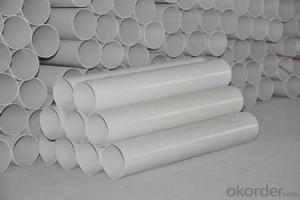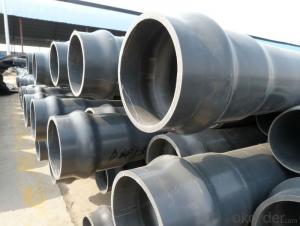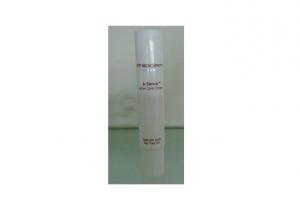pvc pipe 16-630mm Material PVC Specification: 16-630mm Length: 5.8/11.8M Standard: GB
- Loading Port:
- Tianjin
- Payment Terms:
- TT OR LC
- Min Order Qty:
- 1 m
- Supply Capability:
- 9999 m/month
OKorder Service Pledge
OKorder Financial Service
You Might Also Like
Quick Details
Place of Origin: Beijing, China (Mainland) Material: PVC Specification: 16-630mm Length: 5.8/11.8M Standard: GB
Packaging & Delivery
Packaging Details: coils in plastic bag
Delivery Detail: 15- 20 days
Specifications
PVC Pipe
1,16-630mm;
2, Wall thickness:1.6mm-26.7mm;
3, Pn:0.63-2.0MPa;
4, Length:5.8/11.8M
Features:
**Sizes: 16 to 630mm
**Pressure Rating: 0.6MPa, 0.8MPa, 1.0MPa, 1.25MPa, 1.6MPa
**Colors: white, grey, red or other colors on request
**Connection: socket fusion joint
**Standard: GB
**Certification: ISO9001, ISO14001
**Packaging: coils in plastic bag or as your request
Advantages:
**Corrosion Resistant: resist chemical matters or electron chemical corrosion
**Higher Flow Capacity: smooth interior walls result in lower pressure loss and higher volume than metal fittings
**Lower Installation Costs: light weight and ease of installation can reduce installation costs by as much as 50% over metal fittings
**Longevity: more than 50 years under proper use
**Environment-friendly: PVC-U drainage fittings can be recycled
Application
water pipe network system, industrial liquids transportation, Agricultural irrigation pipe and sewage treatment
- Q:Can plastic tubes be used for medical purposes?
- Yes, plastic tubes can be used for various medical purposes such as delivering fluids, medications, or gases to patients, drainage of fluids, or as catheters for various procedures or treatments.
- Q:what is dialysis tubing? how can it be used to demonstrate osmosis?
- Dialysis tubing is actually a semi-permeable membrane when used in water. Experiments illustrating osmosis and pressure gradients across a membrane use dialysis tubing. This tubing usually comes in rolls and when wet, will open up into a cylindrical tube that can be tied off at the ends. The tubing can also be fitted over a thistle tube for such experiments. Dialysis tubing is literally a semi-permeable sheet of plastic. [Like a cell membrane, it can allow certain things in, but not everything.] In a dialysis tubing experiment, one fills the inside of the sheet with a concentrated liquid of some sort and then seals off the open ends of the tube. Then, one places the tube and liquid into another type of liquid and after awhile, the liquid from the outside moves inside the tube. What I did for my first dialysis tubing experiment was filling the inside of the tube with a concentrated starch solution and placed the tubing into a beaker of Lugol's solution diluted with distilled water. After a 1/2 hr, some of the Lugol's and distilled water will have entered the dialysis tubing. One can see that osmosis has happened because the Lugol's in the tube would have turned blue when in contact with the starch. Osmosis caused the diluted/unconcentrated solution of Lugol's and dH2O to go through the semi permeable membrane and into the concentrated solution of starch. Like a cell's membrane, if the outside of the cell is more concentrated, the cell would lose water because the the water will leave the cell and go for the concentrated outside environment. If the inside of the cell was more concentrated than the outside, the outside water will go into the cell through the semipermeable membrane.
- Q:How are plastic tubes recycled?
- Plastic tubes are recycled through a process that involves sorting, cleaning, shredding, melting, and reforming. First, the tubes are sorted based on their plastic type and color. Then, any contaminants are removed through a thorough cleaning process. Next, the tubes are shredded into small pieces. These shredded pieces are then melted and formed into small pellets or granules. These pellets can be used to manufacture new plastic products, including tubes, or can be used as raw materials in various industries.
- Q:Can plastic tubes be used for pneumatic applications?
- Yes, plastic tubes can be used for pneumatic applications. Plastic tubes are often used in pneumatic systems due to their lightweight, flexible, and durable properties. They can effectively transmit compressed air or gases and are resistant to corrosion. However, it is important to consider the specific requirements of the application and select a plastic tube material that is suitable for the desired pressure, temperature, and chemical resistance.
- Q:in my home's a#92;c internal unit there is a rotating plastic tube where the cool air is blowing from. what is the name of this spare part? thanks.
- do you mean the fan ? also called a squirrel cage .
- Q:Are plastic tubes resistant to radiation?
- Yes, plastic tubes can be resistant to radiation depending on the type of plastic used. Some plastics, such as polytetrafluoroethylene (PTFE) and polypropylene (PP), have excellent resistance to radiation and are commonly used in applications where radiation resistance is required. However, it is important to note that the resistance level may vary depending on the specific type and composition of plastic used.
- Q:Can plastic tubes be used for agriculture applications?
- Yes, plastic tubes can indeed be used for various agriculture applications. They are commonly used for irrigation systems, drainage systems, and to protect young plants from pests. Plastic tubes are flexible, durable, and resistant to corrosion, making them suitable for agricultural use.
- Q:How do plastic tubes perform in low-pressure applications?
- Plastic tubes perform well in low-pressure applications as they are lightweight, flexible, and have good resistance to corrosion and chemicals. They are also cost-effective and easy to install, making them suitable for various low-pressure systems such as drainage, ventilation, and irrigation.
- Q:What supplies do you gather to remove an NG tube and what is the care for the pt. afterwared?
- If you don't know...Get a nurse or a doctor to help you. You should not do it if you haven't been instructed to do so. A nurse usually does it.
- Q:What pipes and connections are commonly used in sewage pipes?
- UPVC tube: in fact, is a plastic tube, the interface is generally glued with glue, UPVC tube antifreeze and heat resistance are not good, so hot and cold water pipes are rarely used, PVC tube applies to wire, pipe and sewage pipe.The price is the least expensive of the plastic pipes, relating to the piping specifications. It is widely used as a drainage material in residential buildings.If you want to use better, with PE pipe, cold water and hot water can be used, of course, can also be used in the sewer. Life of 50 years.
1. Manufacturer Overview |
|
|---|---|
| Location | |
| Year Established | |
| Annual Output Value | |
| Main Markets | |
| Company Certifications | |
2. Manufacturer Certificates |
|
|---|---|
| a) Certification Name | |
| Range | |
| Reference | |
| Validity Period | |
3. Manufacturer Capability |
|
|---|---|
| a)Trade Capacity | |
| Nearest Port | |
| Export Percentage | |
| No.of Employees in Trade Department | |
| Language Spoken: | |
| b)Factory Information | |
| Factory Size: | |
| No. of Production Lines | |
| Contract Manufacturing | |
| Product Price Range | |
Send your message to us
pvc pipe 16-630mm Material PVC Specification: 16-630mm Length: 5.8/11.8M Standard: GB
- Loading Port:
- Tianjin
- Payment Terms:
- TT OR LC
- Min Order Qty:
- 1 m
- Supply Capability:
- 9999 m/month
OKorder Service Pledge
OKorder Financial Service
Similar products
New products
Hot products
Related keywords
